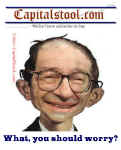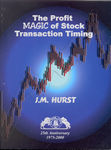|
Subscriber Sections The
Anals MoGauge © Subscription Help (Login, Password etc.) Free Forums Resources Market Stats and Kitco Thumbnail Charts Bear
Essentials Marketviews with Ike Iossif Prudentbear.com
Humor Wall Street Follies Financial Funnies Hilarious! by stoolie prolerbear Not
In My Backyard for Capitalstool. Support the Stool! |

We
don't know and neither do they.
The Bottom That Fools The Majority?
Stepan N. Stool, PH &D (10/29/00)
How quickly things change! Leads me to wonder, can the majority, which had its collective hand over its brow searching the horizon for the "bottom" recently, be correct in so anointing and embracing this turn?
Over the last few weeks, an awful lot of Wall Street analysts, pundits, and fund managers have "called" this bottom. Investors should beware of their bias.
The over-investment bubble in the technology sector marked the final blow-off of the great bull market of the second half of the twentieth century. In the past, such bubbles have been unwound, to the point that extremes of overvaluation have been followed by a wave of business failures, followed in turn by extremes of under-valuation.
Excessive speculation, excessive borrowing, and excessive capital creation, rot the underpinnings of the economy, and the hyperinflation of financial assets results in a financial crisis at some point. For historical precedent we need not look so far back as the 1920s, only to Japan, or the US real estate market of the 1980s.
The propensity to put money back into equities too soon is typical of the first leg of a bear market. If one is a nimble trader, it may be possible to scalp gains of 15% to 20%, but it is dangerous to be committing to those positions before the intermediate low is in place. Likewise it is dangerous to misunderstand the nature of the rally that follows that low. Better to look for overvalued stocks at the top of rallies, and sell them, or even invest in short-sale positions in those which appear unlikely to survive.
Keep in mind that the selling extremes reached at market bottoms over the last ten years can be greatly exceeded in a bear market. Caution and patience will be rewarded. Those who try to be heroes are more likely to die by their swords, or at least their portfolios will.
If
you are interested in the precarious position of our financial
system, check out Credit
Bubble Bulletin over at Prudentbear.com.
|



